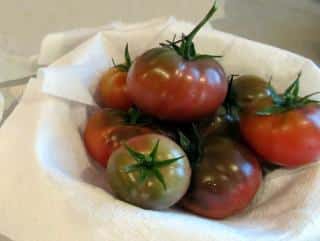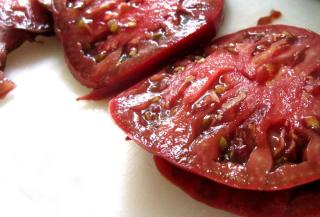

Tomatoes come in many different varieties, some of which stand out when compared to others. This is the case for the ‘Black Krim’ tomato!
As its name shows, it originated in Crimea, a peninsula south of Ukraine. Its dark purple color also contributed to its name. The Black Krim tomato has only spread across the planet in the last 30 years. Its large meaty fruits (up to a pound or 500g) have a soft, yummy taste and are almost seedless – a key to explaining why they’re still as famous as ever.
Smart tip:
use plastic water bottles with the top cut off for nursery pots. Plantlets will then create long roots capable of drilling deeper underground for minerals.
Whether you’ve bought them from a market or have grown them yourself, transplant your tomato seedlings to the ground in May, spacing them 16 to 20 inches apart (40 to 50 cm). For them to settle in well, slant each seedling in the hole and backfill to the point of burying the base up to the first leaves. This portion of the stem will sprout new roots, which increases the plant’s vigor overall.
Smart tip:
Remember to stake your ‘Crimea black’ tomatoes as you’re planting them, so that that you don’t damage the roots later on.
All tomatoes, including the Black Krim, need water. Water it often at the base and don’t get any leaves wet. When fruits appear, start removing some of the lower leaves on the plant, to expose the fruits. This speeds the ripening process up.
Smart tip:
Don’t get too zealous about this, though: after all, leaves are what help the plant grow and survive.
The main disease that affects the ‘Black Krim’ tomato is downy mildew. As for parasites, more often then not it’ll be cotton bollworm caterpillars and whitefly you’ll be dealing with on your plants.


To learn more, read